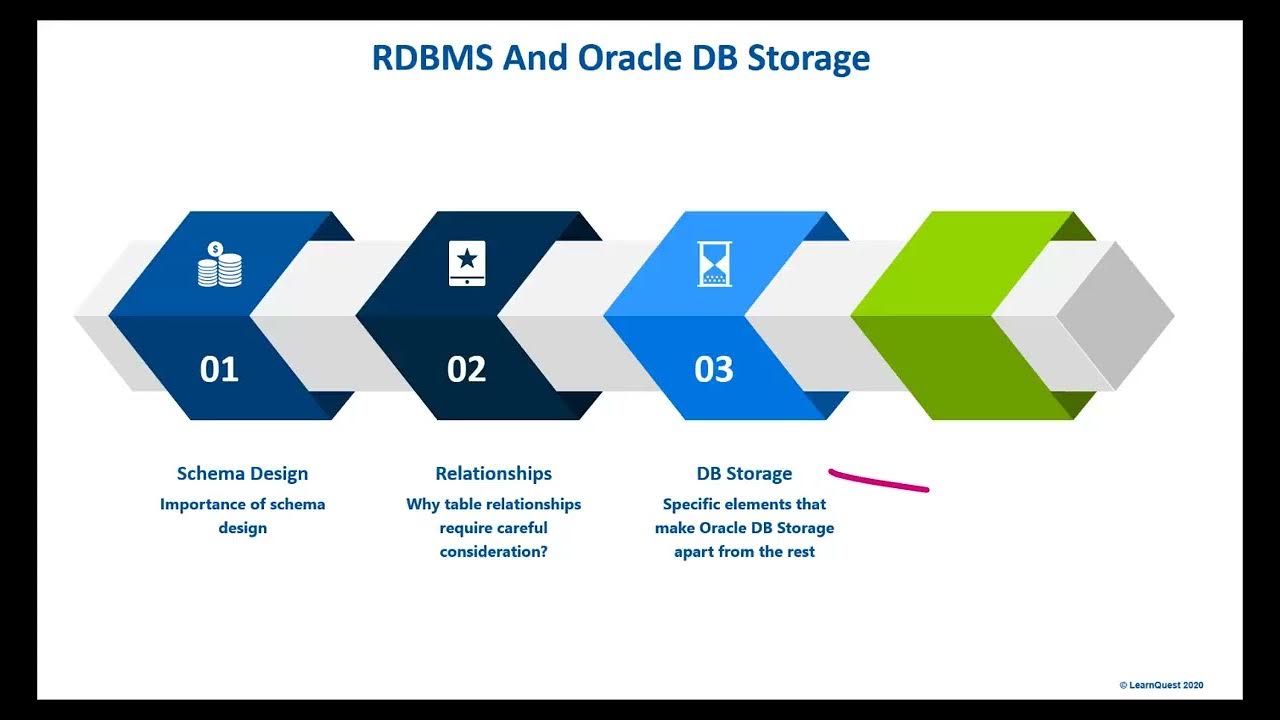Effortless Connection Management with Implicit Pooling in Oracle Database 23c
Summary
TLDRIn this session, Sharat from Oracle's data access development team introduces the implicit pooling capability in Oracle Database 23c. He explains how DRCP (Dedicated Real Connection Pool) enhances scalability by sharing database processes and session memory across applications. The new implicit pooling feature automatically returns idle sessions to the pool, reducing database memory usage and improving scalability. Sharat demonstrates the difference between normal DRCP and DRCP with implicit pooling, highlighting the benefits of better resource utilization and minimal application-side changes required for implementation.
Takeaways
- 😀 The session introduces the implicit pooling capability in Oracle Database 23c.
- 🛠️ Sharat from Oracle's data access development team discusses programming language interfaces and solutions like DRCP.
- 🔗 DRCP (Dedicated Real Connection Pool) is explained as a solution for high traffic, mid-tier architectures requiring high concurrency.
- 💡 Implicit connection pooling with DRCP allows for automatic reusing of idle sessions to reduce database memory pressure and improve scalability.
- 🔧 The feature is enabled by setting a 'pool boundary' parameter in the connect string, with options for 'statement' or 'transaction' boundaries.
- 📈 A demo compares normal DRCP with implicit pooling, showing improved performance and reduced wait times with implicit pooling.
- 📊 The presentation includes a visual graph demonstrating the increased number of requests and hits with implicit pooling compared to normal DRCP.
- 🔄 The difference between 'statement' and 'transaction' pool boundaries is highlighted, with the former being less aggressive than the latter.
- 🌐 Implicit pooling is not only available for DRCP but also for CMAN (Connection Manager) with its PRCP (Proxy Resident Connection Pooling).
- 📝 The presentation concludes with a call to action for further queries and engagement through provided contact details and resources.
Q & A
What is the main topic discussed in the session?
-The main topic discussed in the session is the implicit pooling capability introduced in Oracle Database 23c.
Who is the presenter of the session?
-The presenter of the session is Sharat, who is part of the data access development team at Oracle.
What does the data access development team at Oracle focus on?
-The data access development team at Oracle focuses on building and developing programming language interfaces like Oracle Call Interface, Python, Node.js, Go, etc., and solutions like Connection Manager (CMAN) and Distributed Real Connection Pooling (DRCP).
What is DRCP and how does it help with database connections?
-DRCP (Distributed Real Connection Pooling) is a solution that enables sharing of database processes and session memory across middle-tier processes on the same or different middle-tier hosts. It reduces the database memory overhead and boosts the scalability of both the middle tier and the database tiers by sharing fewer database resources across a large number of client connections.
What is the difference between client connection pools and DRCP?
-Client connection pools are limited to the same process and require the application administrator to tune them. DRCP, on the other hand, is managed by a middleman process called the dispatcher and allows for better resource sharing and scalability, requiring tuning by the database administrator.
What is implicit connection pooling with DRCP?
-Implicit connection pooling with DRCP is a feature introduced in Oracle Database 23c that allows DRCP to automatically reuse idle sessions by releasing them back to the pool once they are stateless (no open cursors, no temporary LOBs, and no transactions), without requiring the application to explicitly release the session.
How do you set up implicit connection pooling in DRCP?
-To set up implicit connection pooling in DRCP, you need to enable DRCP on the database side and ensure the application can use DRCP settings. Then, set an additional parameter called 'pool boundary' in the connect string, which can be either 'statement' or 'transaction'.
What are the two types of pool boundaries in implicit pooling, and how do they differ?
-The two types of pool boundaries in implicit pooling are 'statement' and 'transaction'. The 'statement' boundary releases the connection back to the pool once the cursor is closed, while the 'transaction' boundary releases the connection immediately after a commit or rollback, regardless of open cursors or temporary LOBs.
What benefits does implicit pooling provide?
-Implicit pooling provides improved scalability by better multiplexing on the database side, reduces pool handling on the application side, and supports higher concurrency per middle-tier server through optimal database resource usage. It also requires minimal code changes in the application.
Can implicit connection pooling be applied to other Oracle solutions besides DRCP?
-Yes, implicit connection pooling can also be applied to Connection Manager (CMAN), which is the database proxy for Oracle Database. CMAN has its own session multiplexor called Proxy Resident Connection Pooling (PRCP), and implicit pooling features have been provided to PRCP as well.
How can one learn more about DRCP or CMAN?
-For more information on DRCP or CMAN, one can reach out to Oracle through the provided email or blogs. Additionally, there is a YouTube video available that explains in detail what DRCP is, how to configure it, and how to run and monitor it.
Outlines

此内容仅限付费用户访问。 请升级后访问。
立即升级Mindmap

此内容仅限付费用户访问。 请升级后访问。
立即升级Keywords

此内容仅限付费用户访问。 请升级后访问。
立即升级Highlights

此内容仅限付费用户访问。 请升级后访问。
立即升级Transcripts

此内容仅限付费用户访问。 请升级后访问。
立即升级5.0 / 5 (0 votes)






